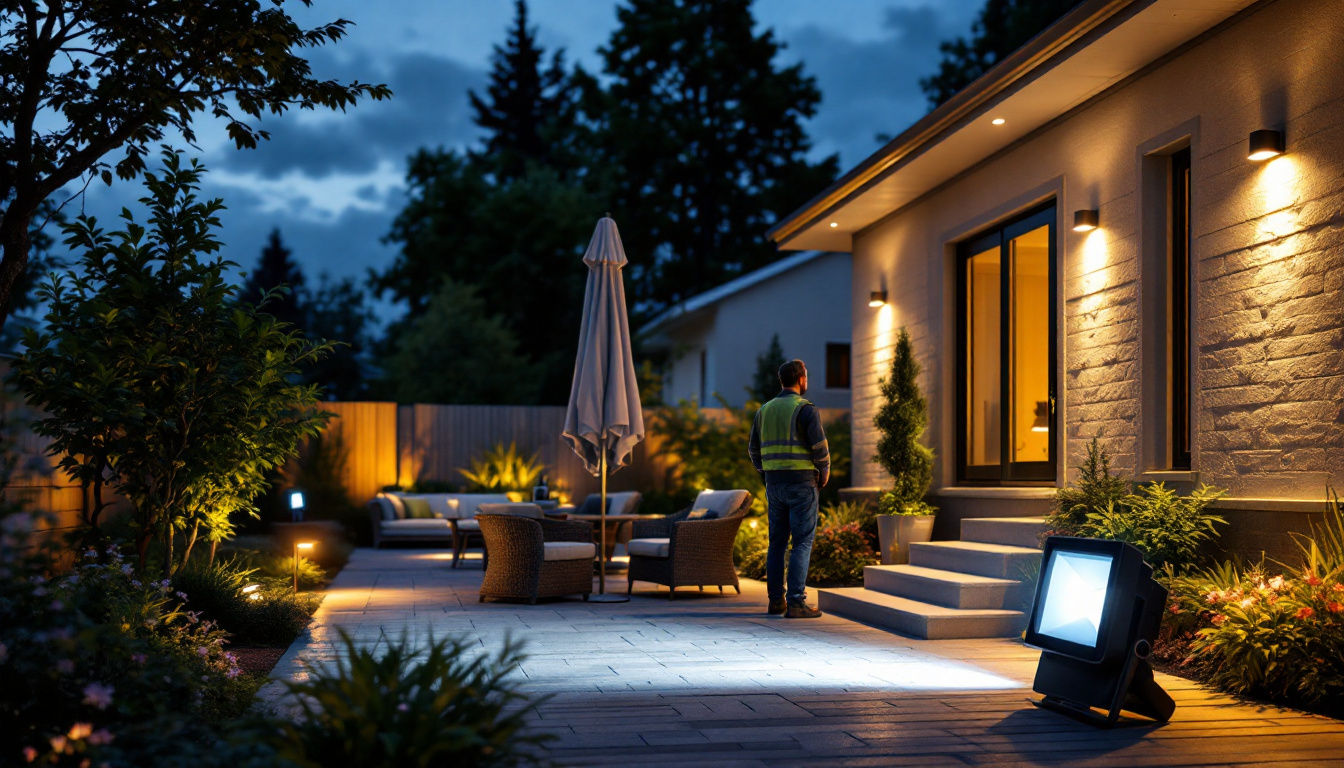
In the world of lighting design, recessed lighting has become a staple for both residential and commercial spaces. Among the various options available, 4-inch recessed lights stand out due to their versatility and compact size. However, selecting the right trim for these fixtures is crucial for achieving optimal aesthetics and functionality. This article will explore best practices for lighting contractors when it comes to choosing and installing trims for 4-inch recessed lights.
Recessed lighting trims serve both functional and decorative purposes. They not only cover the rough edges of the cutout in the ceiling but also influence the direction and quality of light emitted from the fixture. Understanding the different types of trims available is essential for lighting contractors to make informed decisions that meet their clients’ needs. The right trim can enhance the overall ambiance of a space, making it feel more inviting and well-designed.
There are several types of trims available for 4-inch recessed lights, each designed to serve specific lighting applications. The most common types include:
In addition to these common types, there are also specialty trims designed for unique applications. For instance, wall wash trims are specifically engineered to create an even spread of light across a wall, making them an excellent choice for galleries or display areas. Similarly, low-profile trims are designed for ceilings with limited space, allowing for a sleek installation without sacrificing light quality. Each trim type can dramatically alter the mood of a room, making it essential to choose the right one based on the intended use and design aesthetic.
The material used in the trim can significantly affect both the performance and aesthetics of the recessed lights. Common materials include:
Beyond these standard materials, there are also eco-friendly options available, such as trims made from recycled materials or those designed to be energy-efficient. These choices not only contribute to sustainability but can also appeal to environmentally conscious clients. Additionally, the finish of the trim—whether matte, glossy, or textured—can further influence the light’s diffusion and the overall aesthetic of the space. Selecting the right material and finish is crucial for achieving both the desired lighting effect and a cohesive design that complements the surrounding decor.
Selecting the appropriate trim for 4-inch recessed lights involves considering several factors, including the intended use of the space, the desired aesthetic, and the type of bulb being used. Lighting contractors should engage with clients to understand their preferences and requirements before making recommendations.
Before selecting a trim, it is essential to assess the space where the recessed lights will be installed. Factors to consider include:
Additionally, the layout of the room plays a crucial role in determining the best trim choice. For open-concept spaces, it may be beneficial to use a consistent trim style throughout to maintain visual coherence. Conversely, in segmented areas, varying trim styles can help define different zones, enhancing the functionality and flow of the space. Furthermore, understanding how natural light interacts with artificial lighting can also influence trim selection; for instance, a room that receives ample daylight may require less intense lighting, allowing for softer trims that create a warm ambiance.
The type of bulb used in the recessed fixture can also influence the choice of trim. LED bulbs, for example, generate less heat and are often more energy-efficient than traditional incandescent bulbs. When selecting trims, contractors should ensure compatibility with the chosen bulb type to maximize performance and longevity.
Moreover, it’s important to consider the color temperature of the bulbs, as this can significantly affect the mood and functionality of the space. Warmer bulbs (around 2700K) are typically preferred for living areas to create a cozy atmosphere, while cooler bulbs (above 3000K) are often chosen for workspaces to enhance focus and visibility. Additionally, some trims are designed to enhance specific bulb characteristics, such as dimmable options that allow for adjustable brightness levels, making them ideal for multi-functional spaces. By aligning the trim choice with the bulb’s specifications, contractors can ensure optimal lighting performance and energy efficiency, ultimately enhancing the overall user experience.
Once the right trim has been selected, proper installation is crucial to ensure optimal performance and safety. Following best practices can help lighting contractors achieve a professional finish.
Accurate measurements are vital when installing recessed lights. Contractors should ensure that the cutout for the trim matches the specifications provided by the manufacturer. A snug fit will prevent issues such as light leakage or an unprofessional appearance. Additionally, it is advisable to use a template or a jig to mark the cutout area, which can significantly reduce the chances of error. This attention to detail not only enhances the aesthetic appeal of the installation but also contributes to the overall efficiency of the lighting system.
Before installation, it is essential to ensure that all electrical work complies with local codes and regulations. This includes:
Moreover, it’s important to consider the total wattage of the fixtures to avoid overloading the circuit. Contractors should also verify that the circuit is equipped with the appropriate breakers to handle the load, which can prevent potential hazards such as electrical fires. Keeping a detailed log of all electrical components used during installation can also be beneficial for future reference or troubleshooting.
Once the fixture is in place, securing the trim correctly is essential. Most trims come with clips or springs that hold them in position. Ensuring a tight fit not only enhances the appearance but also prevents the trim from falling out over time. In addition to the standard clips, some advanced trims may feature adjustable mechanisms that allow for fine-tuning after installation, accommodating any settling or shifts that may occur in the ceiling structure. It’s also wise to check the manufacturer’s guidelines for any specific recommendations regarding the installation of the trim to ensure longevity and performance.
Quality and safety should always be a priority in any lighting installation. Adhering to best practices can help contractors avoid common pitfalls and ensure a successful project.
Using high-quality trims and fixtures is essential for long-lasting performance. Contractors should source products from reputable manufacturers and verify that they meet industry standards. This not only enhances the quality of the installation but also builds trust with clients.
Safety is paramount when working with electrical installations. Contractors should always:
The lighting industry is constantly evolving, with new trends emerging regularly. Staying informed about the latest developments can help lighting contractors offer cutting-edge solutions to their clients.
Smart home technology is increasingly becoming a standard feature in modern homes. Integrating smart controls with recessed lighting allows homeowners to control their lighting through mobile apps or voice commands. Contractors should familiarize themselves with compatible smart lighting systems to provide clients with innovative options.
As energy efficiency becomes a priority for many homeowners, LED recessed lights have gained popularity. These fixtures consume significantly less energy than traditional bulbs and have a longer lifespan. Contractors should emphasize the benefits of LED options to clients looking to reduce their energy consumption.
Choosing the right trim for 4-inch recessed lights is a critical aspect of lighting design that can significantly impact both aesthetics and functionality. By understanding the various types of trims available, assessing the space, and following best installation practices, lighting contractors can ensure successful projects that meet their clients’ needs. Staying informed about industry trends will further enhance their ability to deliver innovative and effective lighting solutions.
In a competitive market, providing quality service and expert advice will set contractors apart, leading to satisfied clients and repeat business. With careful consideration and attention to detail, the installation of 4-inch recessed lights can transform any space into a beautifully lit environment.
Ready to elevate your lighting projects with the best trims for 4-inch recessed lights? Look no further than LumenWholesale, where we provide lighting contractors with the highest quality, spec-grade lighting products at unbeatable wholesale prices. Our extensive selection is designed to meet the highest industry standards, ensuring you deliver reliable and high-performance lighting solutions to your clients. With free shipping on bulk orders, you can stock up on premium lighting essentials without worrying about hidden fees or compromises. Make your next project shine and experience the best value in wholesale lighting today!

Discover the insider secrets lighting contractors use to master the art of flood lighting.

Discover how innovative light stripe technology is revolutionizing the lighting industry, enhancing efficiency and creativity for contractors.

Discover the key challenges lighting contractors face when working with four-bulb fluorescent fixtures.

Discover the evolution of artificial light and its impact on modern businesses.